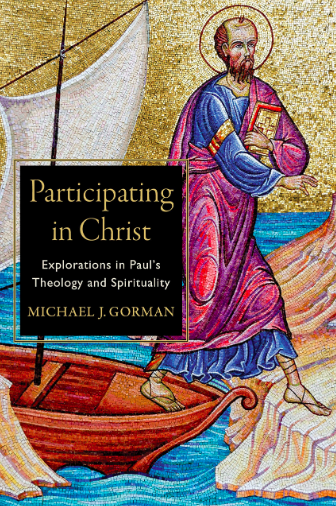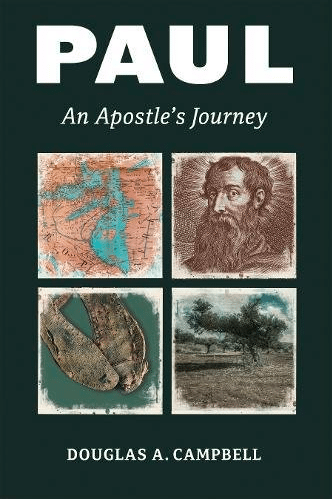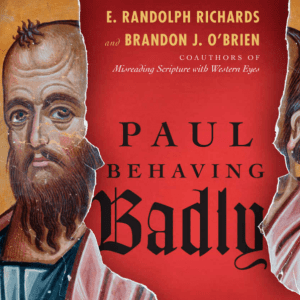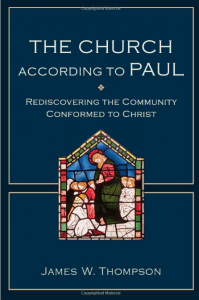 The issue for historians of earliest Christianity is how this stuff all came about: How did Jesus of Nazareth come to be explained or confessed as he was? How did that christology develop? NT Wright, in Paul and the Faithfulness of God, proposes a breathtaking scheme that high christology, seeing Jesus as part of divine identity, was there from the very beginning:
The issue for historians of earliest Christianity is how this stuff all came about: How did Jesus of Nazareth come to be explained or confessed as he was? How did that christology develop? NT Wright, in Paul and the Faithfulness of God, proposes a breathtaking scheme that high christology, seeing Jesus as part of divine identity, was there from the very beginning:
We must note carefully how this argument actually works. I am not saying that there was a pre-Christian Jewish belief that the Messiah, if and when he turned up, would be in any sense ‘divine’. There are indeed texts which, with hindsight, could be taken to point that way, but despite the best efforts of scholars such as Horbury and Boyarin I remain unconvinced that anyone before Jesus’ first followers read them in this sense. Nor am I saying that anyone prior to Jesus’ first followers had read 2 Samuel 7.12 as predict- ing a resurrected Messiah (this is hardly surprising since there is no pre- Christian evidence for a dying Messiah221). What I am suggesting is that the resurrection, demonstrating the truth of Jesus’s pre-crucifixion messianic claim, joined up with the expectation of YHWH’s return on the one hand and the presence of the spirit of Jesus on the other to generate a fresh reading of ‘messianic’ texts which enabled a full christological awareness to dawn on the disciples. I do not think that pre-Christian Jews had read 2 Samuel 7, or Psalm 110 (‘YHWH says to my lord, “sit at my right hand, until I make your enemies your footstool”’), or Daniel 7 (‘one like a son of man’ being exalted to sit on a throne beside that of the ‘ancient of days’) in ways that anticipated, or could be said to be an antecedent cause of, the very early christology. What I propose is that the combination of (a) the widely held expectation of the divine return to defeat Israel’s enemies and rescue his people and (b) Jesus’ resurrection, compelling the conclusion that he really was Messiah, created exactly the conditions within which, in a context of (c) worship and an awareness of the presence and power of the same Jesus, texts which had been there all along but never seen in this way (except, perhaps, in sayings of Jesus himself!) sprang into life.222 The earliest christol- ogy was thus firmly anchored in scripture, but the reading of scripture in question was highly innovatory, and did not itself generate the belief (692).
From 697, NT Wright proposes an unfolding-of-christology scheme:
So why does Paul stress the sending of the son? Quite possibly because he has already developed, or has even inherited from earlier tradition, ways of speaking and praying which belong with a christological monotheism (and, as Bauckham rightly suggests, an eschatological and cultic, as well as creational and covenantal, christological monotheism). These ways of speaking, as we already seen, identify ‘God’ as the source and goal of all things by designating him ‘father’, even while Jesus is designated ‘lord’, kyrios. We might then hypothesize a development in several stages, though as always with such things there is no way we can plot these chronologically. One might imagine the very early Christians, under the impact of the resurrection of Jesus and the fresh scriptural study which it precipitated, doing a variety of interlocking things very early on:
1. using theos for God the source and goal of all things, and kyrios for Jesus, as in 1 Corinthians 8.6, aware that these corresponded to the Hebrew elohim and YHWH, and intending to stress both the unity and the differentiation between the two of them;
2. using the biblical term ‘father’ to denote God/theos/elohim;
3. drawing in the originally messianic title ‘son of God’, already in use for Jesus because of its Davidic overtones and because of Jesus’ own way of speaking, as the natural corollary of this ‘father’. The one denoted as theos is thus seen as ‘father’ specifically of this ‘son’, andthe one denoted as kyrios is seen as ‘son’ specifically of this ‘father’,
even when that connection is not made explicitly;
4. speaking of ‘father and son’ in parallel to speaking of ‘God and lord’;
5. drawing on the ‘wisdom’ traditions, which were already in use in
terms of both the return of YHWH to Zion (Sirach 24) and the equip- ping of David’s son for his royal task (Wisdom 7—9), to speak of the father ‘sending’ the son (Romans 8.3; Galatians 4.4), and of the father transferring people into ‘the kingdom of the son of his love’ (Colos- sians 1.12–13, with the great ‘wisdom’-poem of 1.15–20 to follow), and of the kyrios as the one through whom all things were made (1 Corinthians 8.6; Colossians 1.16);
6. understanding the whole sequence in terms of the climactic and deci- sive rescuing act of the one God, the new Exodus in which this God had revealed himself fully and finally precisely in fulfilling his ancient promises, saving his people and coming to dwell in their midst.
All this, I stress, is necessarily hypothetical. Unless fresh evidence from the first twenty years of the Jesus-movement were to turn up (the age-old dream of a Christian archaeologist!) it remains impossible to demonstrate that any such sequence of thought actually took place. And ‘a sequence of thought’ has nothing to do with chronological extension. A mind well stocked with scripture, allied to a heart understanding itself to be trans- formed by the spirit and attuned to the worship of Jesus, could grasp in an instant what we are forced to reconstruct slowly and carefully. But I submit that this does seem to reflect some aspects of the data we actually possess. Interestingly, though move (4) seems somewhat obvious, Paul seldom uses the word ‘father’ in direct connection to a designation of Jesus as ‘son’. The closest we come in the passages already discussed is where believers cry ‘Abba, father’, because the spirit of the son has been sent into their hearts, and in Colossians 1.12–14, where ‘the father’ has ‘transferred us into the kingdom of the son of his love’ (697-698).
But this may be the biggest thing many need to hear today:
This brings us back to a point we have made already and which can now be reiterated with renewed force. None of this seems to have been a matter of controversy within the earliest church. This indicates, against the drift of studies of early christology for most of the twentieth century, that what we think of as a ‘high’ christology was thoroughly established within, at the most, twenty years of Jesus’ resurrection. In fact, to employ the kind of argument that used to be popular when it ran in the opposite direction, we might suggest that this christology must have been well established even sooner, since if it had only been accepted, say, in the late 40s we might have expected to catch some trace of anxiety or controversy on this point in Paul’s early letters at least. And we do not. The identification of Jesus with YHWH seems to have been part of (what later came to be called) Christianity from more or less the very beginning. Paul can refer to it, and weave it into arguments, poems, prayers and throwaway remarks, as common coin. Recognizing Jesus within the identity of Israel’s One God, and following through that recognition in worship (where monotheism really counts), seems to have been part of ‘the way’ from the start (709).











